By Pat Rothchild

Burnout appears to be a form of vicarious Post-Traumatic-Stress Disorder (PTSD) in my view, but modern researchers are discovering that it may also have a lot to do with depression. We don’t know for sure how it gets seated in the human psyche. Suicide is a common end-zone for folks who burn out, so it’s important to take it seriously. Burnout can be tricky to diagnose because its carriers don’t realize they have it. They may feel exhausted, have trouble with their immune responses and inflammatory issues, have difficulty concentrating or recalling names and commitments. They may become irritable, impatient and self-absorbed. Basically, whatever physical, emotional or intellectual vulnerabilities we may have appear likely to become triggered as we burnout.
I’ve treated a lot of healers who’ve burned out. It looks to me like it starts off as a stress reaction and eventually morphs into depression for those who don’t get good with taking care of themselves. That’s a little different than the way most PTSD patients present and evolve without treatment. When those folks don’t get the help they need, they tend to develop character disorders. Before the bifurcation between mood and character disorders, the two groups look and behave the same. And, the same interventions seem to work for both groups.
I’m discussing this because burnout is a likely risk factor in our work that can only be ignored at our clients’, horses’ and our peril. The good news is that there’s a lot we can do to avoid it, once we know its danger signals and risk factors. These risks can often be mitigated, once we know where they’re lurking.
Empathy – Our Greatest Strength and Deepest Vulnerability
Most folks drawn to the healing professions are well endowed with empathy. Empathic people are far more likely to burnout than those who aren’t. In fact, in thirty-six years of professional practice, I never saw a non-empathic person with burnout. I’ve dealt with hundreds of empathic healers who had it. This leads me to believe that our empathy makes us more vulnerable to whatever neurological changes are its foundation. This is problem far better avoided than treated.
There are things that we can do to avoid the scourge of burnout. I’ve evolved a twice daily practice to discharge what I think of as tag-along stress. That’s the lingering fragments of other peoples’ tales of woe that I have listened to intently throughout my working life. When a client is telling me the history of whatever issue brought them to me, I let myself get thoroughly into it. I need to to do my job well. Our clients need to feel heard and cared about. The only way I know of to give them this life-line is to authentically care about them! When their stories are traumatic, that trauma often seats in us too.
Weaving a Network of Resilience
When I was a youngster, I thought I had to take on all this stress to heal the client. Early on, I dealt with it easily. It’s demanded more of me as time progressed. At the time, I was in a fairy-tale relationship with my soul mate. I was active in my community, which appreciated the time and energy I contributed. I had a life-long mindfulness practice that was integrated into an ever-changing, but always strong spiritual practice. I was also physically active. My critters and I connected mindfully regularly. I was living the dream. These factors turned out to be predictors of resilience in the face of stress.
Having a good social-support network is critical for human health. It mitigates all sorts of problems that can befall us vulnerable, hairless apes. Without it, we are at the effect of all manner of potential threats. Our nervous systems (NS) become more reactive when we don’t have trusted allies watching our backs. This is a set up for PTSD.
Having a spiritual framework through which we filter incoming data is another critical component of resilience. It doesn’t seem to matter what that practice or belief system is, it just needs to be deeply seated within the person. When we can use this framework to make sense out of apparently senseless stuff, like gratuitous suffering, we offer our psyches a lifeline to equilibrium.
Exercise is important to our health in all sorts of ways. From the perspective of stress management, sustaining enough physical activity to get and keep us dewy for at least twenty minutes is necessary to metabolize the physiological waste products of stress. If we don’t burn them off physically, they linger in our systems. One of the results can be chronically-high cortisol levels. This too increases our reactivity and reduces our capacity to recover our equilibrium.
Mindfulness with critters is something that I was first shown when I was three-years old. I grew up practicing it. This was/is a huge help in mitigating all manner of challenges. I can’t even imagine life without it. It is my number-one stress reducer. Teaching others to do it turned into my professional calling. It’s served me well in every sector of my life.
How Horses Heal Humans
Today, stress is ubiquitous. If you work with people now, you’re contending with others’ stress loads as well as your own. Plants and critters are deeply stressed now too. Everybody on the planet is reeling from the toxic soup that we humans have mindlessly infused our shared soils, water and air with. Connecting with others in a state of Mindfulness helps to counteract some, if not all, of this stress. It’s still my best trick to discharge mine and others’ stress loads. One of the niftiest things about sharing mindfulness time with others is that it helps to mitigate everybody’s stress. Wee, we really are designed to thrive, once we get that we’re not the Lone Ranger.
Healing humans with horses is a tremendously effective and efficient way to address burnout. So is engaging dogs and cats. Wildlife also respond to mindfulness. People do too, but their responses can be a lot more confusing or subtle than most critters. I strongly prefer to work with stressed-out clients with critter helpers, at least initially. Once they get their mindfulness practices embedded into their consciousness and lives, introducing other humans into their healing work is often helpful too.
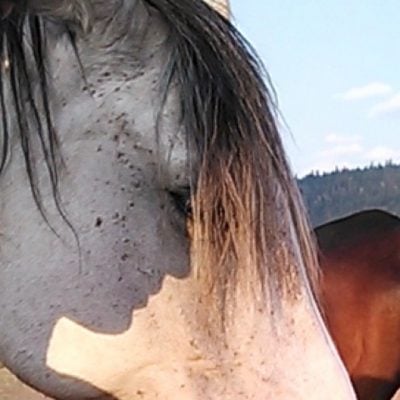
Having spent twenty years working primarily with dogs and cats in my practice, then switching back to horses, I have noticed differences in how they work. They all easily connect to humans when we’re in states of Mindfulness. The more compromised the client, the harder it is to get them into a Mindfulness pattern.
Anxious folks, which is everybody dealing with stress, are usually reluctant to play around with changing their minds. Inevitably, resistance comes up. It requires a lot of time and effort for both the client and therapist to work through it. Everybody who is horse-green, goes into Mindfulness in proximity to horses. There’s no need to convince people to try different ways of working their brains when horses are involved. Their bodies take over and do it. This greatly accelerates healing by removing most of the slogging-through-peanut-butter part.
This is great news for the clients, horse handlers, therapists and horses. It’s the peanut-butter slog that appears to creates burnout in those who are trying to help and often exacerbates symptoms the those who come to heal. I’ve never found anything that comes close to horses’ ability to cut through this difficult and dangerous part of healing. It just goes away when horses are part of the healing mix. This is so significant that I have a recurring dream of a little airplane sky-writing “HORSES HEAL HUMANS!” around the globe. That dreamtime airplane seems to have become my version of Santa Claus.
Mindfulness Practice With Horses
Once we humans have a few experiences with Mindfulness, our brains prime themselves to go into that pattern with greater ease. Each time we do, our bodies, minds and spirits discharge stress. Our physiology lets go of all manner of toxic chemistry, thought patterns and feelings. Space opens for fresh, more functional energy. It’s like magic, only it’s as real as color. This works just as well for the human healers, horse handlers and clients, when we get ourselves properly lined up to ride the Mindfulness wave horses generate in us.
So, how do we position ourselves to benefit from all this Mindfulness? We encounter horses with a beginner’s mind. Yup, it’s as simple as that. Park everything that you think you know about horses and especially the particular horses that you’re working with outside of where you’re working. Just leave all that important knowingness in a safe place. Then, go introduce your fresh, new, beginner’s mind to the horses in a state of Mindfulness.
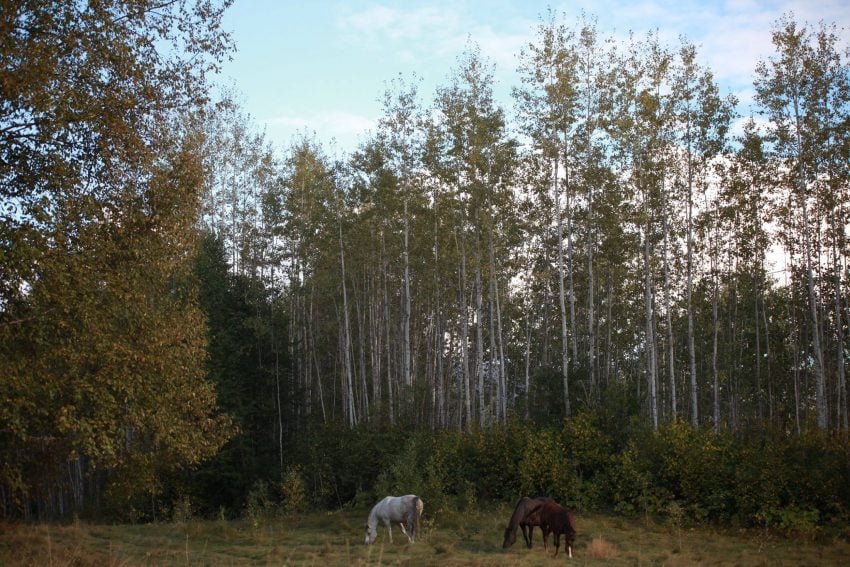
Stray thoughts arise when we’re in a state of Mindfulness. This happens to everybody. These thoughts derail the neurological pattern of Mindfulness and jettison us back into our default mode. This appears to be a way for our bodies to conserve energy. It takes a lot of energy to sustain Mindfulness. To counter-act our body’s desire to conserve our energy this way, just shift what you’re concentrating on. So, if I begin my journey to Mindfulness entranced with muzzle action and a stray thoughts floats to the surface, I switch my attention to how my feet feel attached to the ground, the rhythm of my breath, the feel of the air on my face or hands…
Once we start practicing Mindfulness regularly, it becomes easier to achieve and hold. When we’re in the neurological pattern linked to a critter, something changes in our neurological function. Problematic behavioral, thought and feeling patterns begin to break up. This is hugely effective in counter-acting all manner of stress, including burnout.
Pre-Session Warm-Up Exercise
Whenever I work with critters to heal humans, I engage them in a little warm-up exercise before the client(s) arrive. First, I ground and find my beginner’s mind before I open their gate. As I walk out to greet the horses, hopefully in a good-sized pasture where they live, I pay close attention to the fodder available there. That’s what I pick because I figure that’s what is most important to the horses. I don’t really know if that’s a factor. It works for me though.
By the time I reach them, if they don’t initiate an introduction, I stand about twenty feet off and watch them eat. I inevitably pick one horse and zero in on her or his muzzle action. That get me into Mindfulness. Within seconds, I can feel them or one of them nudging into my mind frame. That often feels like a pictorial information package being deposited into my consciousness. It might look like anything. It doesn’t seem to matter what’s transmitted. As long as it isn’t fear or rage, we’re connected enough to work well together. I send back a little imaginary picture book of stress healing to the horses. Now, I have no idea if they actually receive these packets as I send them. I’m certain that somethings land though, because the horses change after I send them. They release tension. So does my body. I read this as verification that we’ve linked.
Every horse has its own ways of releasing different types of stress. It takes a while to get a feel for how each horse in a band does that and how the others respond to it. We can still do good work with horses before we have grokked all the dynamics of the band we’re working with.
I find it necessary to have at least one release experience with each horse involved in a healing before the client arrives, even if I’ve worked with these horses before. It’s a new day. The dynamic may have altered. This can be a quick and easy little Mindfulness dance between the horse and human healers. It doesn’t have to be a long-drawn-out affair. Of course, the more you work with one group of horses, the easier and more informative it is.
Post-Session Release & Recalibrate
I do another Mindfulness link with the horses after the work is finished too. This gives all our bodies an opportunity to release any stress we may have absorbed from the client or others involved in the healing. Usually, after this release, the horses tear up the pasture for a few minutes. I think that this is probably their way of discharging the physiological waste of stress. After a few good bucks and a gallop, they either rest or go back to grazing. Life goes on.
I then look around for something useful to do that will get my heart and respiration up enough to keep me dewy for at least twenty minutes. That’s how I release the stress metabolites. This is hugely useful in preventing burnout. If I’m working somewhere new, where I haven’t yet established relationships with the ranch hands, I sometimes do this off site. Usually it can be worked into the time at the facility. If you’re willing to work and know your way around ranch chores, your efforts will usually be appreciated. I prefer to do my exercise near the horses so I can keep an eye on their post-session behavior. It’s one of the ways I assure myself that they’re fine after a session.
I’ve found that I need both Mindfulness strategies and exercise to detox from the stress of sessions. I need to go through the whole routine for each session, or my body-mind-spirit balance begins to erode. This tendency has become more pronounced with time. I need to perform more maintenance on myself now, than I did when I was a youngster. Since this is true in all sectors of my life, my guess is that increased maintenance requirements may be just part of aging.
Keeping on Top of Stress
Stress sneaks up on us humans. It’s super important when we heal for a living to stay ahead of the resultant stress BEFORE we even register it as stress. Once we become consciously aware of our stress level, it’s already off the charts. By then, we’re deeply marinated in toxins. The only functional strategy for combatting predictable work-induced-stress reactions, that I’ve found, is to keep well ahead of them.
Horses are vulnerable to work-related stress too, as are dogs and cats. That’s why I always link with them from a position of Mindfulness before and after each session. It helps enormously to discharge their and our resultant stress. I have said it before, but this bears repeating: I consider it my sacred duty to leave critters who help me heal humans better off for their effort. That translates, in my mind, to making sure they’ve benefitted from the healing at least as much as the client. I think that all of us who engage critters to help heal humans are duty-bound to this principle.
I have yet to meet a domesticated animal who didn’t gravitate toward humans who were in Mindfulness. They’re as magnetized by this neurological pattern as we humans are, or more so. It feels to me like they’ve been waiting for generations to communicate with us crazy humans. They’re eager to link in ways that are functional. I have also never met a horse who wasn’t eager to reconnect with someone with whom they’ve had a Mindfulness encounter, even if it got a little dicey. Once they know you can do it, they want more. Almost everybody does.
This can become problematic for Mindfulness healers. It can begin to feel like everybody wants a piece of you. That’s exhausting. When we’re in healing mode, it feels great. It feels so good that it can become addictive. It’s super important to maintain a balanced life while healing. That can be challenging when wounded folks flock to you, or hit you up with horror stories on trains and planes or grocery store lines. When we’re in the healing zone, we broadcast it. Energy that needs to be healed finds us, often at random, inopportune moments, like when we’re lost in thought about the state of our finances while waiting in line at the bank. We have to find ways to shut it down so we can tend our lives.
Get Yourself Some Allies
One of the first symptoms of burnout is workaholic behavior. We get into spaces where we can’t turn it off. That’s a signal we need to pay close attention to. It’s time to get help! By the time we hit this wall, we’re reeling from stress. We’ve lost perspective. Regaining it is going to require some serious reality testing. Get thyself to someone who can help you with that, pronto! No matter how experienced, smart, crafty or careful you are, you’re not going to dig yourself out of this hole by yourself. You’ll only get yourself more deeply stuck. Even your horses aren’t going to be able to haul you out without some outside assistance.
I’ve been in this business for thirty-six years and wouldn’t do it without a trusted professional ally, or two, or eight. There are many reasons. Burnout is the top one. We just can’t perceive burnout within ourselves. It’s tough to even after symptoms begin to pop up. I don’t know why, but it appears to be universal among humans.
So, in my opinion, having a trusted professional ally whom you will listen to even if you think he or she is full of it, is critical. Set up those relationships before you begin seeing clients!
I’ve managed this need differently as my life has evolved. Early on in my psych career, I had a wondrous mentor who became a dear friend. We saw each other daily during the summer because she vacationed in our neighborhood every summer. During other seasons, my husband and I travelled to the city where she lived regularly. We kept a little apartment there for our urban adventures. She was a fixture in every visit. That went on during much of my graduate education and the first twenty years that I practiced.
After she died, I made a different sort of relationship with a different type of mentor. He was a psychotherapist who was also a Catholic priest. This was interesting for both of us, in part because I was a practicing pagan. We sometimes did rituals together, which were awesome. And, we faithfully pointed out burnout symptoms for one another for a couple of decades.
Don’t Take Burnout As a Given
We don’t have to burn out. We will though, if we don’t take effective care of ourselves. This is a multi-faceted process. We each need to play around with our own circumstances to build in the necessary components to our self-care routine. These are a strong social and spiritual community in our private lives, a regular exercise routine that we engage in after each session, a regular Mindfulness practice and a professional mentor or colleague whom we respect enough to listen to when she or he tells us that we may be burning out. That’s the person I turn to when I need to reframe a traumatic event so I can get myself out from under its influence.
For me, having strong relationships with critters and my natural environment are also critical components of my self-care. This isn’t necessarily so for everybody. Everybody whom I’ve worked with on burnout has had their own special something. You do too. Find whatever it is for you and hold it close, but also give it room to evolve.
The healers I have known have all been a little strange by societal standards. I haven’t yet met a true healer who didn’t have some kind of kink in their get-along. My guess is that figuring out how to cope with it is what shifts us onto our healing trajectory. Those kinks rarely disappear. It seems that part of their function is to keep our empathic skills on track. That’s important. Without empathy, healing doesn’t happen. We healers need to continually work on providing safe ground for our empathic skills to flourish. Preventing burnout is a prerequisite.

Healing requires a lot from us. To be effective, we need to take good care of ourselves in every sector of our lives. It takes far more time than we spend in the presence those we’re healing. If we want to continually improve our skills, which we will need to if we are to stay in the field, we need to dedicate our lives to it. This is no small thing.
We need to build in ways to be acknowledged and compensated for our dedication. This is no easy matter in our culture. Life doesn’t provide this automatically. We need to set up our offers so that this is built in, or we’ll burnout. We need to do this for our critter and human helpers too. The good news about this is that our healing team will be there for us too when we need them, if we’ve done our job well.
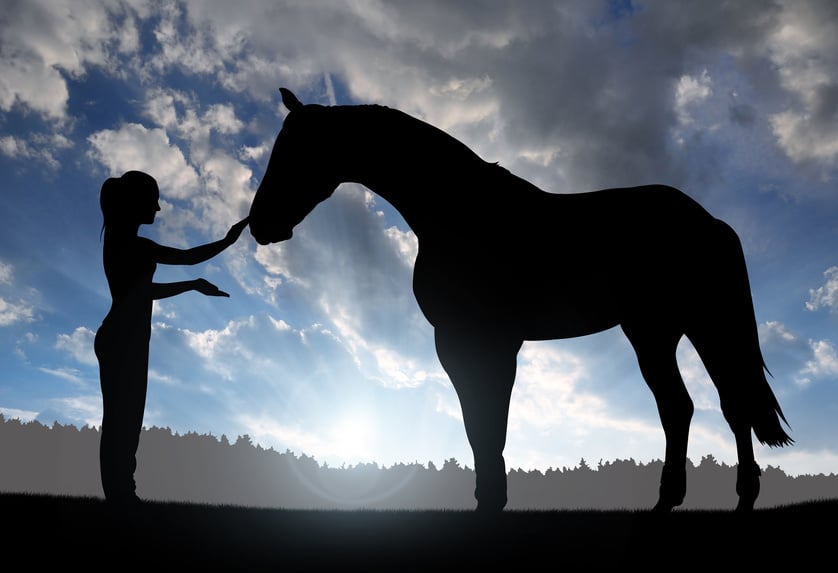
Special stories and experiences from fellow horse listeners

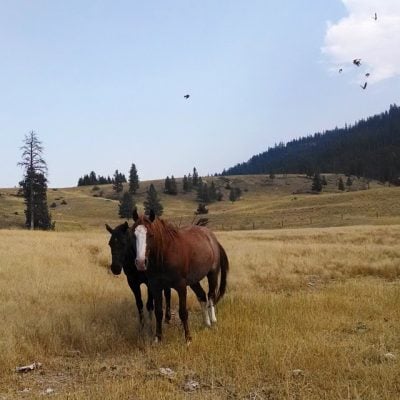
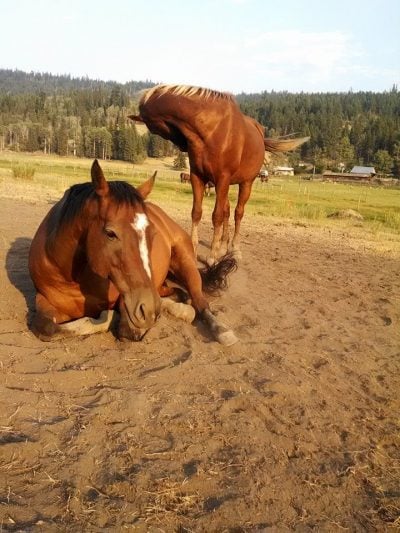

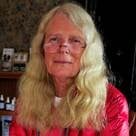 AUTHOR BIO: Pat Rothchild is a psychotherapist with 36 years of practice under her belt. Shifting her perspective from trainer to student in relation to her horses, cats, dogs and chickens was a hugely productive step, as was the journey from western medicine to holistic healing. She feels plants and animals are stepping up to offer us paths toward healing our
AUTHOR BIO: Pat Rothchild is a psychotherapist with 36 years of practice under her belt. Shifting her perspective from trainer to student in relation to her horses, cats, dogs and chickens was a hugely productive step, as was the journey from western medicine to holistic healing. She feels plants and animals are stepping up to offer us paths toward healing our 





